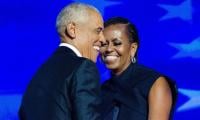Rejecting hate
Delhi voters have rejected the politics of hatred, fear and divide. The Indian capital city rejected the toxic politics of the BJP in the recent Delhi assembly elections.
Despite having a strong campaign and spending lavishly, the BJP failed to impress the majority of Delhi voters, and suffered a humiliating defeat by bagging just eight seats in out of the total 70 assembly seats.
On the other hand, the Aam Aadmi Party (AAP) won 62 out of 70 seats. In the 2015 elections, the AAP won 67 seats while the BJP finished with three seats. The AAP has lost five seats while the BJP won five more seats. The political future of both Arvind Kejriwal and the AAP was at stake in this election. A defeat could have ended the relevance of former taxman Arvind Kejriwal and the AAP in national politics. This emphatic victory will help increase their political clout.
In 2015, the BJP received 32.3 percent share of votes, the AAP got 54.3 percent votes and the Congress just 9.7 percent. In 2020, the AAP got 53.64 percent, BJP 38.43 percent and Congress just 4.27 percent. The BJP succeeded in increasing its share of votes by around five percent but it was not big enough to defeat the AAP which lost just less than one percent votes.
Congress was the major causality of this election as its vote share further fell from 9.7 percent to 4.27 percent. The once mighty party which ruled India continues to lose support.
Delhi Chief Minster and Aam Aadmi Party (AAP) leader Arvind Kejriwal rightly pointed out in his victory speech that: “The people of Delhi have given a message that they will vote for schools, mohalla clinics, 24-hour electricity and free water. This is a great message for the country.”
But in assembly elections he asked voters to vote for his performance and delivery. He said: “Vote for us only if our government has worked over the past five years. Otherwise, vote for the BJP.”
The general election in India was all about national politics and Modi. So the BJP routed the AAP and Congress in the Lok Sabha elections. In the general elections, voters had preferred BJP and Congress over AAP. BJP leaders were optimistic about winning most seats on the basis of the Lok Sabha election results eight months ago. The BJP won all the seven seats in Delhi (for the Lok Sabha) and the AAP was far behind in third place.
For the Delhi elections, the BJP was mainly relying on the support of middle-class voters who overwhelmingly voted for Modi in the national elections last year. But the majority of middle class voters preferred the AAP over the BJP in the assembly elections. The reason seems to be the performance of the AAP government, which has succeeded in maintaining its image of a clean and pro-people government that tried to serve the people. The majority of voters seem satisfied with the performance and delivery of the Kejriwal government.
Kejriwal had warned Delhi voters that “the BJP will not help you get treatment in hospitals, reduce electricity bills and ensure quality and affordable education” in Delhi. He successfully conveyed this message to middle class and working class voters.
The Kejriwal-led AAP pulled an emphatic victory against the hardline Hindu nationalist BJP led by Modi. As a result, the BJP suffered a humiliating defeat in Delhi assembly elections. Modi’s indispensible image has been tarnished as a result of this crushing defeat.
The negative campaigning failed to impress the Delhi voters. The BJP relied too heavily on their Hindutva and anti-Muslim agenda in the election campaign. Its leaders tried to incite violence against anti-citizen act protesters, and especially against the women protestors of Shaheen Bagh.
BJP leaders are no more trying to hide their real agenda. They have been emboldened by their clear victory in the last Lok Sabha elections just eight months ago. They started to believe that there is no political force which can stop their march towards making India as an authoritarian-neo-fascist and hardline Hindu nationalist state. They are now openly using fascist tactics and violent means to achieve their Hindutva agenda.
Kejriwal and his AAP skilfully combined the performance of the Delhi government and his Hindu identity to attract middle-class Hindu voters. Unlike Congress, Kejriwal did not try to openly embrace the Muslim voters; instead, he presented himself as a devoted Hindu. This strategy worked well for his party.
The BJP has a simple strategy to win elections. It paints every leader who criticises Modi and its fascist policies as anti-Hindu. This strategy worked well for the BJP in the general elections last year.
During the assembly elections, Kejriwal was criticised for asserting his Hindu identity on social media and at public events but analysts believed that this move countered the BJP’s attempt to paint him and the AAP as anti-Hindu. In the assembly elections, he asked voters to vote for his performance and delivery. This argument went well with many voters.
The BJP made the Citizenship Amendment Act and the protest movement against it as the main issue in this election. The party accused Shaheen Bagh protesters and the AAP of being anti-national elements. This strategy backfired.
The economic crisis and rising unemployment is eroding Modi’s image of a leader who can fix everything. His economic performance is coming under the spotlight. The general strike and protest movement has already mobilised millions of people against his government. The movement against the Citizens Act has changed the Indian political landscape. The protest movement is posing direct challenge to Modi. It might turn out to be the toughest challenge so far.
The writer is a freelance journalist.
-
 Gabriel Diallo Vs Alexander Zverev: Rising Canadian Eyes Major Upset Opportunity
Gabriel Diallo Vs Alexander Zverev: Rising Canadian Eyes Major Upset Opportunity -
 Bo Nix Injury Update: Broncos Quarterback Fractures Ankle Against Bills
Bo Nix Injury Update: Broncos Quarterback Fractures Ankle Against Bills -
 Oilers Vs Canucks: Why Edmonton Is Without Leon Draisaitl
Oilers Vs Canucks: Why Edmonton Is Without Leon Draisaitl -
 49ers Crushed As Kenneth Walker III Leads Seahawks To 41-6 Win
49ers Crushed As Kenneth Walker III Leads Seahawks To 41-6 Win -
 Canadiens Star Lane Hutson Makes History With 100th NHL Assist
Canadiens Star Lane Hutson Makes History With 100th NHL Assist -
 Bridgerton’s Claudia Jessie Says Her Real-life Style Is Nothing Like Eloise’s
Bridgerton’s Claudia Jessie Says Her Real-life Style Is Nothing Like Eloise’s -
 Prince William Barred From Riding E-scooter At His Own Home!
Prince William Barred From Riding E-scooter At His Own Home! -
 Prince William New PR Step Is Not 'shrewed Move,' Says Expert
Prince William New PR Step Is Not 'shrewed Move,' Says Expert -
 Barack Obama Honours Michelle Obama On Her 62nd Birthday
Barack Obama Honours Michelle Obama On Her 62nd Birthday -
 Why Kate Middleton Runs Away From 'some Royal Relatives'
Why Kate Middleton Runs Away From 'some Royal Relatives' -
 Khloe Kardashian's Ex-husband Lamar Odom Arrested In Las Vegas
Khloe Kardashian's Ex-husband Lamar Odom Arrested In Las Vegas -
 Andrew Mountbatten Windsor Has Staff From 'big Brother' For All His Needs
Andrew Mountbatten Windsor Has Staff From 'big Brother' For All His Needs -
 Perrie Edwards And Alex Oxlade-Chamberlain Welcome Second Child
Perrie Edwards And Alex Oxlade-Chamberlain Welcome Second Child -
 Meryl Streep To Return In 'Mamma Mia 3'?
Meryl Streep To Return In 'Mamma Mia 3'? -
 James Cameron Weighs In On Debates He Still Has About 'Titanic' Raft Scene
James Cameron Weighs In On Debates He Still Has About 'Titanic' Raft Scene -
 'Star Wars' Director Speaks Out Against 'scared' Comment
'Star Wars' Director Speaks Out Against 'scared' Comment



